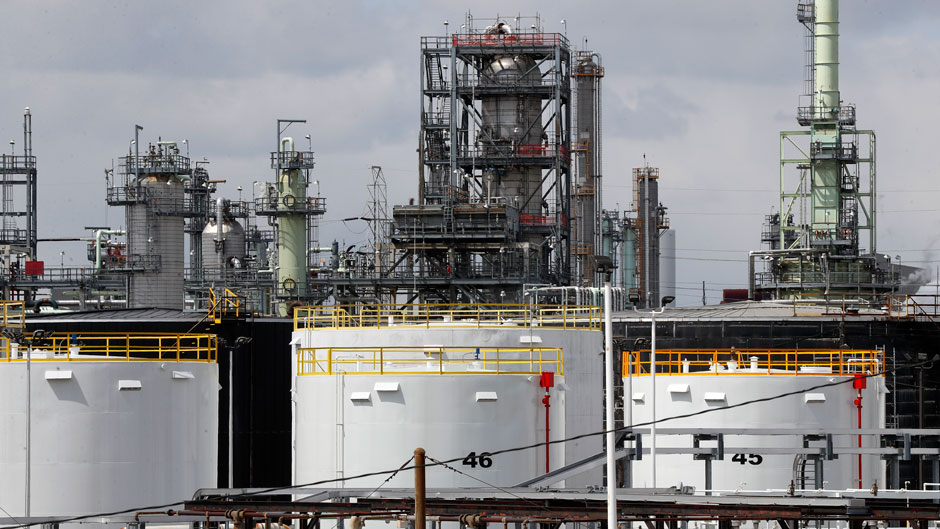Oil production has so eclipsed demand in recent weeks that you can nearly hear the “slosh-slosh” of crude swirling in the storage tanks. While ocean tankers carrying as much as 300-million barrels of oil are maneuvering figure eights looking for buyers, planes are grounded, road traffic has stalled, half the world is harbored at home, and energy consumption worldwide has dropped by 25 percent.
Arun Sharma, professor of marketing in the University of Miami Patti and Allan Herbert Business School, whose business expertise includes global market trends, market structures, and market strategy, shared his insights on the volatile market and its implications for the oil industry moving forward.
What factors, in addition to COVID-19, have contributed to the collapse of the oil industry?
It’s important to understand the industry environment. Apart from a blip in 2008 where demand dipped, the global demand for oil has been on a continual upward trajectory for decades. COVID-19 has completely disrupted that trajectory, and demand for oil is falling.
The second factor influencing the crisis is excess oil production. The U.S.-based shale oil manufacturers, Russia and Saudi Arabia—all major oil producers—continue to produce oil while demand is declining.
Industries undergo disruptions when supply is dramatically higher than demand. This is one of the fundamental problems in the industry and the reason for the volatility.
How has the recent feud between mega-producers Saudi Arabia and Russia contributed to the current volatility?
It has got a lot to do with it. In early March, the oil-producing countries came together, except for the U.S., to discuss reducing production as the demand for oil had started falling. Saudi Arabia wanted to reduce the amount of oil produced by the Organization of the Petroleum Exporting Countries (OPEC) and Russia. But Russia did not want a reduction in oil production, believing instead that lower prices in oil would reduce the profitability of U.S. shale oil manufacturers—leading some of them to fail and exit the market. Since Russia and Saudi Arabia could not agree, in retaliation, Saudi Arabia decided to pump more oil and sell oil at a discount. So, the large oil-manufacturing countries were pumping oil in large quantities when demand was declining.
On April 8, with American oil companies struggling, President Trump got involved. The fight between Saudi Arabia and Russia ended. But now there is excess oil in the system, there’s no storage capacity left, and you must pay to get your oil out of your hands.
With so much oil sloshing around, why not just turn off the oil spigots?
We are getting reports that shale oil companies are shutting down wells. We can reduce production at the edges, but there’s no central entity that controls the production of oil—OPEC used to, but with Russia and the United States having extensive oil production facilities, it no longer controls the market.
The more significant issue is that several countries have their budgets supported by oil revenues. There is resistance to shut off production because it eliminates revenues. Oil is important to everyone’s economy and critical for those countries trying to get away from coal and nuclear as sources of energy. The perturbations may be short term, but they lead to longer-term implications. It is expected that the oil prices will be lower in the long term—and that is bad for countries dependent on oil revenues.
What’s the prognosis for the oil industry?
We currently have a surplus of oil. We don’t know how long this imbalance is going to last. One trigger for increased oil prices can be a significant incident in the Persian Gulf, as it may restrict supplies. Because oil is so inexpensive, we may see a spurt of oil consumption as prices may be lower than the prices of other energy sources.
Yet, because oil prices are so low, and prices determine revenue and profitability, we will find major oil companies analyzing their own operations to reduce expenses to become more efficient. Also, the price of oil is less than what it costs shale oil companies to extract. However, shale producers will also use this opportunity to relook at their cost structures, and oil extraction will become less expensive in the long term.
Will we continue to see volatility? What needs to happen for the oil markets to stabilize?
We have an understanding of supply. But until we understand demand better—which means we understand the impact of COVID-19 on travel and transportation—we will not be able to estimate the demand for oil accurately. The lack of accurate demand estimation will continue to create volatility in the oil market. Once demand becomes more definite, then we will be able to match demand and supply—which will make things much easier.
In summary, future demand for oil is unknown at this point. And, until that crystallizes, we will have volatility in the oil markets.

